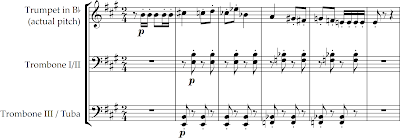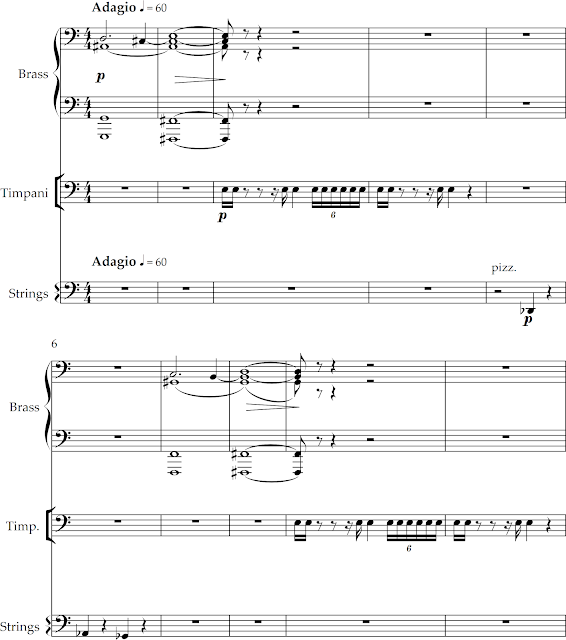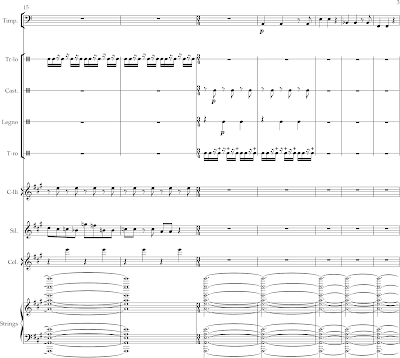DXL. SHOSTAKOVICH, Dmitri (1906-1975)
His final symphony was his first purely instrumental one since the Tenth (1953). He was finally writing something purely joyful -- perhaps -- he whispered to friends, to celebrate his 65th birthday in 1971 ...
First movement
And it begins cheerfully, with a chirping flute, followed by a sardonic bassoon:

First movement
And it begins cheerfully, with a chirping flute, followed by a sardonic bassoon:

and soon it becomes a Rossini quote, played twice. Hi-ho, Silver!
Shostakovich features the percussion, with tooting trumpet and piccolo:
After some intense development, he swaps the Rossini theme into the winds, and ends the movement with a thump ...
Second movement
A dark F Minor brass chorale, followed by a pleading solo cello:
A dark F Minor brass chorale, followed by a pleading solo cello:
Is this perhaps death knocking?
Spooky celesta and vibraphone lead into somber strings; then timpani and bassoons as we attacca into the next movement ...
Third movement
Always ready to lighten the mood after such a heavy movement, Shostakovich jumps into ascending and descending phrases, which might be described as grotesque!
This short section is reminiscent of the end of the Second Movement of the Fourth Symphony (see Post VIII):
and he repeats it to the end the movement, adding a xylophone for additional spookiness:
Fourth movement
The movement begins with somber brass and timpani:
But the mood immediately changes as he launches into a calm Allegretto:
It's worth recalling that the Fourth Symphony -- which was written 35 years before this one -- had only very recently been retrieved from the bottom drawer and performed. This delightful percussion motif ended the previous movement, and here Shostakovich adds the xylophone and a long pp string chord, held for an eternity.
We bid adieu to the great symphonies of Dmitri Shostakovich:









































No comments:
Post a Comment